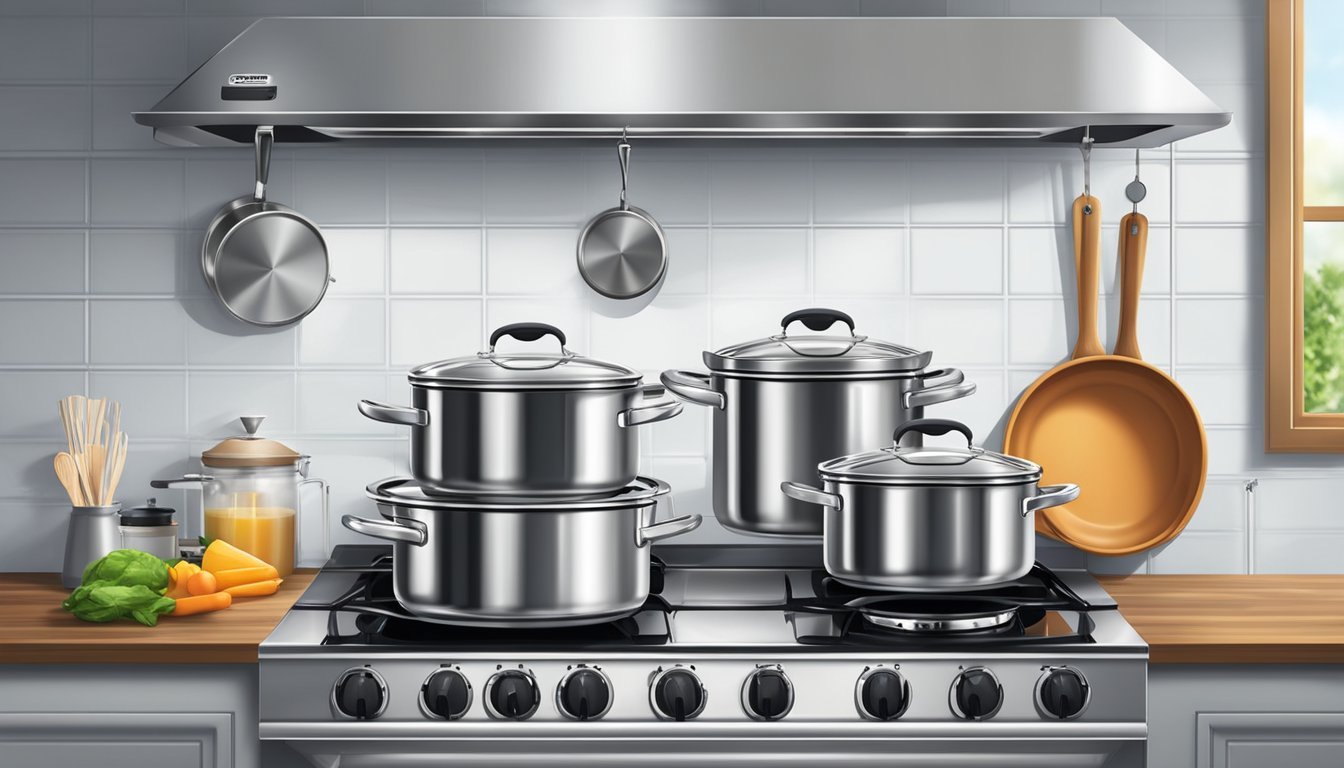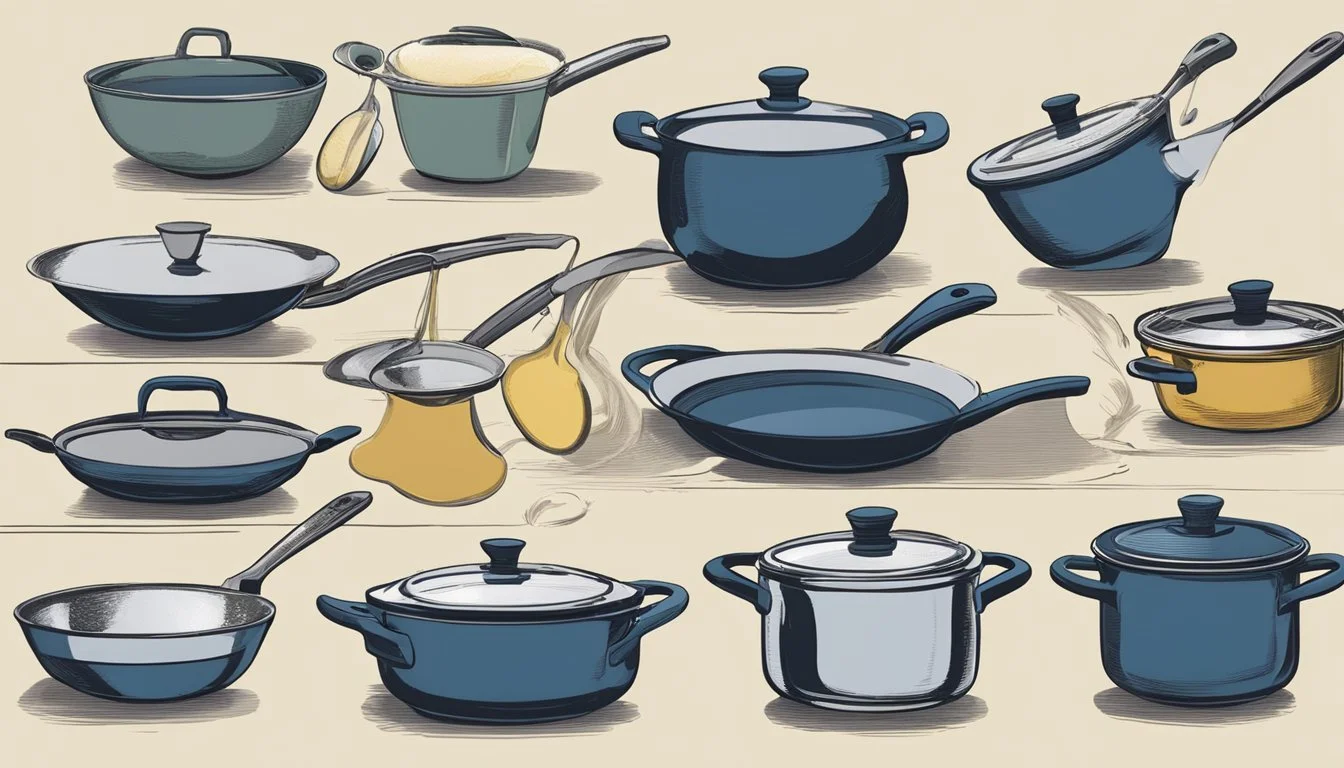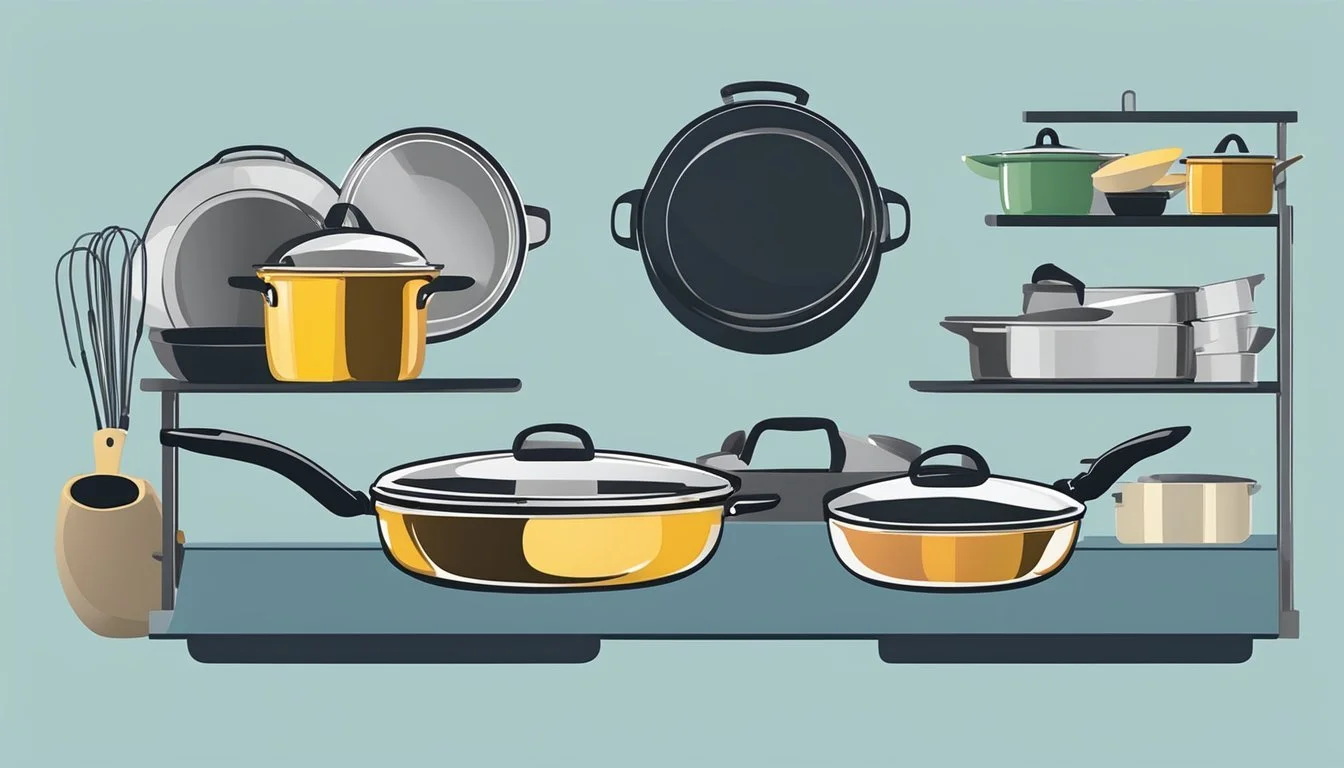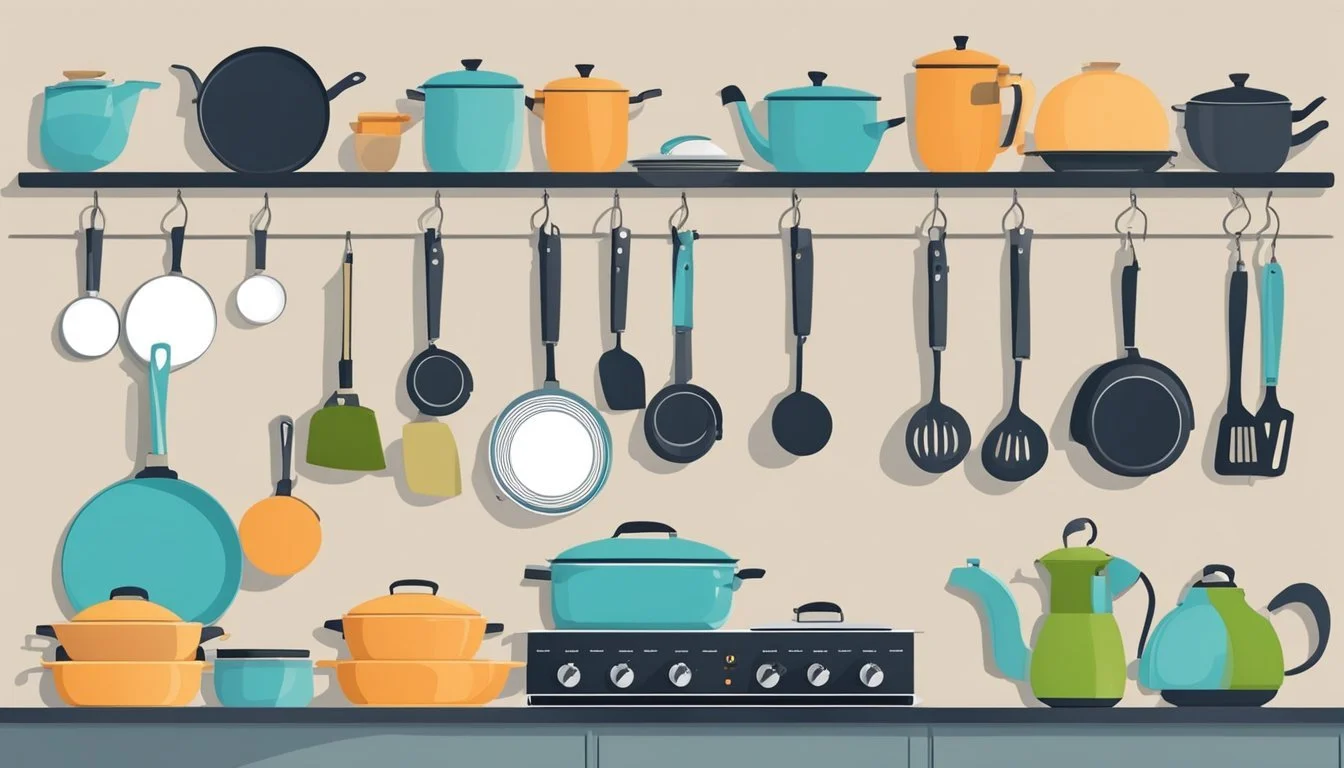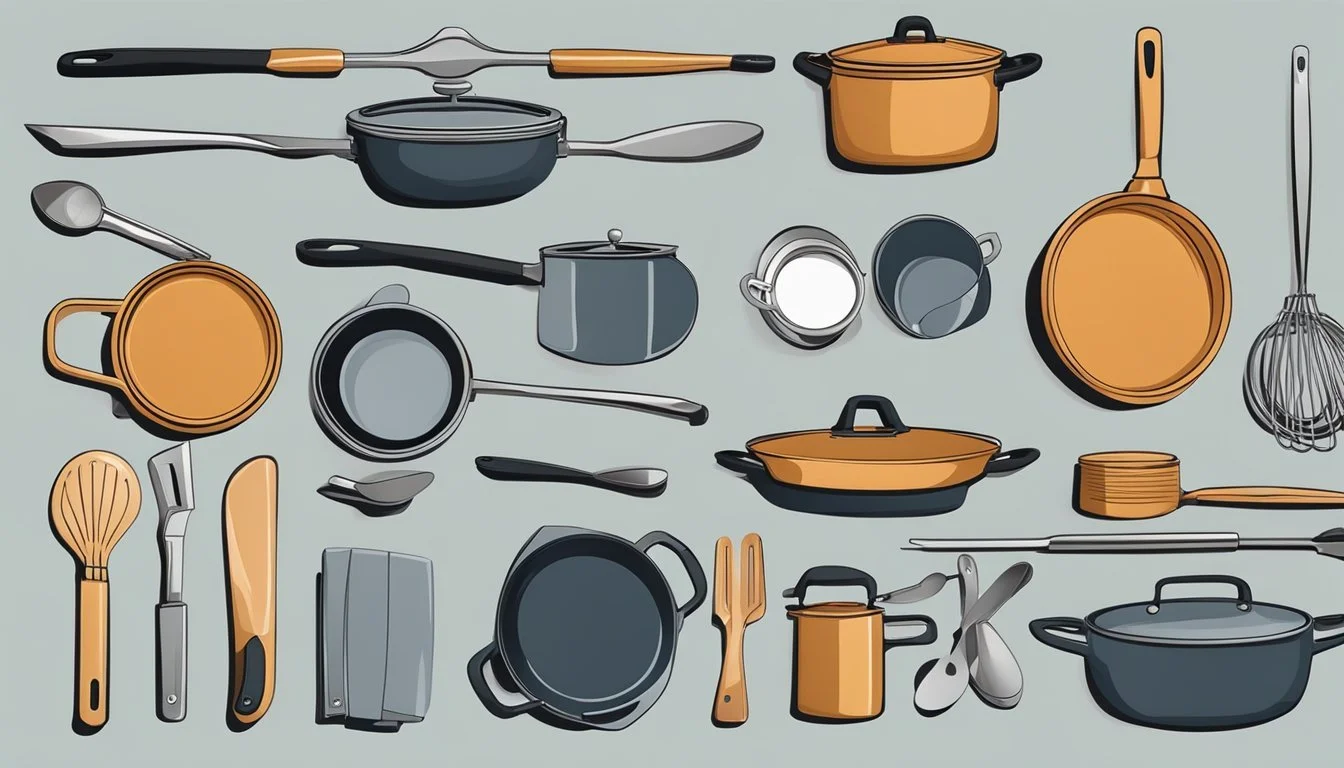The Best Clean Cookware for the Busy Home Kitchen
When it comes to equipping a home kitchen, busy families and individuals seek a balance between convenience and health. Clean cookware has gained popularity as it promises a cooking experience free from harmful chemicals commonly found in traditional nonstick cookware and coatings or chances of heavy metals leeching into your food. These alternatives offer peace of mind, ensuring that the food prepared is not only delicious but also free from potential contaminants.
Selecting the best clean cookware involves understanding the materials and designs that enhance the cooking process while maintaining a toxin-free environment. Options range from ceramic cookware, stainless steel or cookware with an enamel coating to newer innovations like silicon and eco-friendly composites. Each material has unique properties that benefit different cooking methods and preferences.
A well-informed choice in clean cookware can transform meal preparation into an efficient, health-conscious, and enjoyable endeavor that is free from toxic chemicals. Manufacturers today focus on creating products that not only meet these health standards but also cater to the fast-paced lifestyle of modern home chefs, ensuring durability, ease of cleaning, and consistent cooking performance.
Understanding Cookware Materials
Selecting the right materials for cookware is essential for efficiency and health in the busy home kitchen. Each material has specific properties that influence heat conduction, durability, maintenance, and potential food interaction.
Stainless Steel
Stainless steel cookware is revered for its durability and non-reactivity, which means it does not alter the taste of acidic foods. Clad stainless steel pans, a type that sandwiches a layer of aluminum or copper between stainless steel layers, effectively conduct and retain heat due to the core material.
Cast Iron
Hefty and rustic, cast iron pans provide excellent heat retention and even cooking. They require regular seasoning to maintain a natural nonstick surface and to prevent rust. Cast iron is known for its ability to withstand high temperatures, making it suitable for searing and baking.
Aluminum
Aluminum cookware is lightweight, cost-effective, and an excellent heat conductor. However, it is prone to warping and reacting with acidic foods, which can be prevented with an anodized aluminum finish—an electrochemically hardened surface that is non-reactive and scratch-resistant.
Copper
Copper cookware offers superior heat conductivity, allowing for precise temperature control. It's the choice for discerning cooks who value responsiveness in their cookware. Typically, copper pots and pans are lined with stainless steel to prevent food from coming into contact with copper.
Nonstick Options
For those prioritizing convenience and ease of cleaning, nonstick pans are a popular choice. Traditional nonstick surfaces have been challenged by ceramic nonstick coating options, which offer a non-toxic alternative. It’s important to use non-metallic utensils to prevent scratching the delicate surface of nonstick pans.
Evaluating Cookware Durability
When selecting cookware for a busy home kitchen, one must consider how the materials and construction contribute to longevity and require maintenance.
Construction and Longevity
The durability of cookware is often determined by its construction. High-quality materials and robust manufacturing techniques are crucial for cookware to withstand the rigors of daily use.
Materials: Stainless steel cookware and metal utensils are known for its durability and resistance to warping or scratching. It's also heavy enough to heat evenly without being overly burdensome to handle. Cast iron options are heavier, offering high durability and excellent heat retention, yet they demand regular maintenance to maintain their seasoning and prevent rust.
Coating: Non-stick pans often feature coatings like Teflon, but these can wear over time with constant use and exposure to high temperatures. Ceramic coatings provide a non-stick surface and are generally considered durable when cared for properly.
Handles and Lids: Handles that are welded or riveted securely to the body of the cookware are less likely to become loose over time. Lids should fit snugly and be made of tempered glass or a matching heavy-duty material for longevity.
Thick Bases & Walls: Cookware with thick bases and walls are less likely to deform. They can also better distribute and retain heat, minimizing hot spots that can cause food to stick and degrade the cooking surface.
Maintenance: Durability also entails ease of maintenance. Stainless steel is dishwasher safe and easy to maintain, but non-stick and cast iron require careful hand washing and should not be subjected to abrasive sponges or harsh detergents.
It is essential for consumers to invest in cookware that balances durability with the required maintenance to ensure it remains effective and safe for daily cooking tasks.
Heat Distribution and Cooking Performance
The quality of cookware is defined by its ability to distribute heat evenly and respond to temperature changes quickly. These characteristics directly influence cooking performance and the outcome of the food prepared.
Even Heat Distribution
Cookware that provides even heat distribution is critical to prevent hot spots, which can result in unevenly cooked food. Materials known for their excellent heat distribution include:
Copper: Reacts quickly to temperature changes, allowing for precise cooking.
Aluminum/Hard-Anodized Aluminum: Has superior heat conductivity, often used with an exterior coating to prevent reactions with acidic foods.
Stainless Steel with Copper or Aluminum Cores: Combines durability with improved heat distribution.
It's important to select pans that have a thick, heavy bottom, which contributes to uniform heat spread and retention, essential for tasks such as searing meat or simmering sauces.
Cookware and Heat Sources
Different cooking surfaces can affect how cookware performs:
An induction stove requires pots and pans that are magnetic to work correctly. They offer quick and efficient heating by creating a magnetic field between the cookware and the cooker.
A gas stove is an excellent choice for people who are looking for immediate heat that's adjustable, allowing cookware made of responsive materials to excel.
Electric stoves, including glass top ranges, may distribute heat more slowly and unevenly, necessitating cookware with excellent heat distribution capabilities to compensate.
When selecting cookware for an induction burner, one must ensure it's labeled as "induction-ready". Cast iron and magnetic grades of stainless steel cookware are optimal choices for induction stovetops.
By matching the right cookware with the appropriate heat source, one can optimize cooking performance and enjoy consistently well-prepared dishes.
Comparing Cookware Sets
Selecting the right cookware set for a busy home kitchen necessitates balancing quality, performance, and value. This section offers a comparative overview of popular brands and budget-friendly options.
Top Cookware Brands
All-Clad stands out for its high-quality stainless steel cookware sets renowned for excellent heat conduction and durability. Their sets are often preferred by professional chefs and are suitable for induction cookware needs. Le Creuset offers enameled cast iron sets, celebrated for even heat distribution and retention. These sets come in a variety of vibrant colors, adding aesthetic appeal to function.
Lodge, an American classic, is known for its reasonably priced cast iron cookware. Lodge’s pre-seasoned pieces are ready to use, offering reliability and simplicity. In the ceramic space, Great Jones makes an appearance with their modern design and chemical-free, non-stick surfaces, presenting a healthier cookware option.
Cuisinart provides a variety of cookware sets, including stainless steel and non-stick options. Their products are versatile and provide excellent value for multi-purpose cooking.
Budget-Friendly Sets
Tramontina offers cost-effective stainless steel and non-stick cookware sets. They are a popular budget pick for many home cooks due to their balance of price and performance.
Cuisinart also features in this category with their competitive pricing and a broad range of options, appealing to cooks looking for affordability without compromising quality.
In summary, a busy home kitchen can benefit immensely from the right cookware set, whether the priority lies in superior craftsmanship or cost efficiency.
To maintain neutrality and avoid any potential conflict of interest, no specific endorsements have been made. This section presents information on cookware sets as part of a broader discussion, helping readers make informed decisions based on pertinent cookware qualities and pricing considerations.
Essential Cookware for the Home Kitchen
Having the right cookware at one's disposal can make cooking more efficient and enjoyable. Focusing on quality and functionality ensures home cooks are well-equipped to handle a variety of recipes.
Must-Have Pieces
Saucepans: A versatile piece, ideal for boiling pasta or simmering sauces. A good saucepan has a heavy bottom to distribute heat evenly. They typically range from 1 to 4 quarts in capacity.
Skillets: Essential for frying and sautéing. Cooks should have both a nonstick skillet for delicate foods like eggs and a cast-iron or stainless steel skillet for searing meats. Sizes generally vary from 8 to 12 inches in diameter.
Dutch Oven: Highly valued for its capacity to retain heat, making it perfect for stews, braises, and bread baking. A 5 to 7-quart Dutch oven is a solid choice for most kitchens where you can easily transfer it from stove to oven.
Stockpot: Necessary for making stocks, soups, or cooking large quantities of food. Stockpots are tall and come in various sizes; however, an 8-quart pot is a practical size for home cooks.
Sauté Pan: Designed with straight sides for making quick sauces or sautéing vegetables without splattering. A 3 to 4-quart sauté pan is suitable for most households.
Each piece of cookware should feature a solid construction, heat-resistant handles, and be free of potentially harmful coatings. While there may be a myriad of cookware options, a homeowner's collection built upon these essentials will cover most cooking tasks with efficiency.
The Convenience of Dishwasher-Safe Cookware
Selecting dishwasher-safe cookware is a strategic choice for maintaining a clean and organized kitchen with minimal effort. It allows for quick and efficient clean-up, saving valuable time for home cooks.
Dishwasher-Safe Options
When it comes to cleaning, dishwasher-safe cookware provides a clear advantage: it allows one to skip the sink full of dish soap and water and go straight to the convenience of a dishwasher. Not only does this streamline the cleaning process after meal preparation, but it also ensures consistent sanitization, as dishwashers can reach high temperatures for effective disinfection.
Dishwasher-safe cookware offers several advantages that make it an appealing option for many home cooks. First, it eliminates the need for labor-intensive hand washing, allowing you to simply place used pots and pans directly into the dishwasher. This saves considerable time and effort compared to scrubbing by hand. Additionally, the high heat of the dishwasher provides thorough sanitation and eliminates bacteria. Dishwasher-safe cookware is also easy to use, with no complex instructions required - simply place in the dishwasher and run a normal cycle. Properly caring for dishwasher-safe pots and pans by avoiding abrasive cleaners can also extend their lifespan significantly compared to hand-washing. With benefits like time efficiency, effective sanitation, ease of use, and longevity, it's easy to see why dishwasher-safe cookware is a convenient choice for many busy households.
One should look for labels or instructions that confirm cookware is suitable for dishwasher use. Certain materials like stainless steel and some ceramics often make the list, whereas nonstick pans may require careful review as not all are dishwasher safe. Additionally, cast iron typically should not be placed in dishwashers to prevent rust and maintain its seasoning layer.
Cookware handles and lids also deserve attention. They should be checked for materials that withstand the dishwasher's environment, as some may degrade with repeated exposure to high heat and detergents. Conscientious selection of dishwasher-safe cookware means less time spent scrubbing and more time enjoying the pleasures of home cooking.
Cookware Care and Maintenance
Proper care and maintenance can extend the lifespan of cookware and ensure its best performance. Adapting the right cleaning methods for different materials and understanding how to maintain particular cookware items like cast iron are essential for any home kitchen.
Cleaning Tips
For most cookware, routine cleaning with warm water and a small amount of dish soap, using a sponge or a soft brush, is sufficient. Stainless steel cookware benefits from this gentle approach to avoid scratching. In contrast, abrasive cleaners such as steel wool should only be used for stubborn residues and when the manufacturer's instructions permit.
There are a few key things to keep in mind when cleaning different types of cookware. For stainless steel, you'll want to use warm water, dish soap, and a sponge or soft brush to clean. Non-stick pans can also be cleaned with warm water, dish soap, and a sponge, but avoid using steel wool as it can scratch the surface.
Cast iron requires a bit more care - clean it while still warm with hot water and a brush. You can use coarse salt as a mild abrasive if needed to remove stuck-on food. It's best to avoid the dishwasher for cast iron cookware, as it can cause rusting.
If you have food that is really stuck onto the cookware, letting it soak in warm water and dish soap before scrubbing can help loosen the debris. Be sure to check the manufacturer's guide for your specific cookware to see if it's dishwasher safe. The dishwasher should be avoided for cast iron.
Seasoning Cast Iron
Seasoning a cast iron skillet involves coating it with a thin layer of oil and heating it. This creates a natural, non-stick coating and protects the surface from rust. Proper seasoning should be performed periodically to maintain the cookware's optimal condition for high-heat cooking.
Clean the cast iron skillet with hot water using a brush.
Dry thoroughly, usually in a warm oven or over low heat on the stove.
Apply a thin coat of oil (vegetable oil, flaxseed oil) over the entire surface, including the exterior and handle.
Place upside down in a preheated oven at about 375°F (190°C) and bake for an hour.
Let it cool down in the oven.
Seasoning can be considered as maintenance rather than a regular cleaning routine. Cooks should perform this process several times a year, depending on the frequency of use and the appearance of the cookware. Utensils made of silicone or wood are recommended for use with seasoned cast iron cookware to preserve the seasoning.
Aesthetics and Ergonomics
When selecting clean cookware, it is not only its ability to cook with minimal oils and ease of cleaning that matter. Aesthetics and ergonomics are also critical, impacting how cookware fits within a kitchen’s design and how comfortable it is to handle during cooking.
Design and Comfort
A well-designed piece of cookware boasts a balance between visual appeal and practical function. Manufacturers often offer a variety of colors to complement different kitchen styles, from classic neutrals to more vibrant hues for a pop of personality on the stovetop.
Exterior finish matters; it's not only an aspect of style but also influences durability. Matte, glossy, and textured finishes are common, with each providing a different visual effect and ease of maintenance.
Handles are a crucial element, designed to stay cool to the touch while being sturdy enough to support the weight of the pots and pans. They should be comfortable to grip, often with silicone or rubberized coatings to ensure a non-slip hold.
Most quality cookware comes with glass lids which allow cooks to view their food without lifting the lid, thus maintaining temperature and cooking efficiency. The glass lids should fit snugly and often include steam vents to prevent boiling over.
Material Comfort: Silicone, rubber coating
Colors: Neutral to vibrant range
Finish Types: Matte, glossy, textured
Tool design is also thoughtfully considered; the cookware's weight and balance are optimized to prevent unnecessary strain during use. It's a marriage of form and function, where ease of use is as important as how pleasing it looks on a hook or a shelf.
Safety Concerns and Considerations
When selecting clean cookware for a busy home kitchen, one must prioritize safety to ensure a risk-free cooking environment. The material composition, compatibility with various kitchen appliances, and best practices during cooking play pivotal roles in maintaining safety standards.
Safe Cooking Practices
The use of cookware in the kitchen requires adherence to certain safety practices to prevent accidents and preserve the cookware's integrity. Here are specific guidelines to consider:
Lid Usage: A proper-fitting lid prevents spills and splatters, reducing the risk of grease burns. It also helps maintain the desired cooking temperature.
Stain Prevention: To avoid permanent stains that can compromise the cookware's surface, promptly clean spills and avoid using abrasive cleaning tools that may scratch the surface.
Grease Management: Never leave hot grease unattended, and always wipe excess grease from the cookware to prevent flare-ups.
Glass Cookware: When using glass cookware, one should avoid sudden temperature changes, which can cause the glass to shatter.
Microwave Guidelines: Ensure cookware is labeled "microwave-safe" before use. Metal and some plastics should never be used in microwaves due to the risk of fire or harmful chemical leaching.
Broiler Safety: If cookware is broiler-safe, verify it can withstand high temperatures without warping or releasing toxic fumes.
Oven Use: Check the maximum temperature tolerance for oven use and always use oven mitts to handle hot cookware.
By keeping these considerations in mind, one can maintain a focus on safety while using clean cookware in a busy kitchen.
Additional Cookware Features
In selecting clean cookware for a busy home kitchen, consumers should pay attention to lids and their materials, as well as the latest advancements in cookware technology. These features can affect cooking performance, ease of use, and longevity of the cookware.
Lids and Accessories
Lids are pivotal for effective cooking – they retain heat, moisture, and flavor. A well-designed lid should fit snugly on its corresponding pot or pan. Most high-quality cookware comes with lids made of either glass or metal. Glass lids allow cooks to monitor food without lifting the lid, while metal lids typically offer better durability.
Glass Lids: Allow for viewing food while cooking; oven safe up to a certain temperature
Metal Lids: Often made from stainless steel or titanium, offering superior heat retention
Accessories, such as silicone grips for handles, can provide additional safety and ease of handling. A test kitchen often suggests sets that include these accessories because they protect the user from heat and provide a more secure grip.
Advanced Cookware Technologies
Advanced cookware technologies integrate materials like titanium and carbon steel to improve the cookware's performance and maintenance.
Carbon Steel: Combines the heat retention of cast iron with the lighter weight of stainless steel. Ideal for high-heat searing and is oven-safe.
Titanium: Known for its superior strength-to-weight ratio and anti-corrosive properties. It reduces the risk of chemical leaching and is favored for its non-reactive quality.
New technologies also introduce non-stick coatings that are free from harmful chemicals like PFOA and PFOS, making them safer for cooking and easier to clean. These coatings can be applied over various metals, ensuring a durable and low-maintenance cooking surface suitable for busy home kitchens.
Choosing Cookware According to Cooking Habits
When selecting cookware for the home kitchen, one should consider the types of dishes they frequently prepare. Specific cooking needs often dictate the choice of pots and pans, and following professional chef recommendations can lead to better results and a more efficient cooking experience.
Cookware for Specific Dishes
For those who enjoy making pancakes, a non-stick skillet is essential. It allows for easy flipping and keeps delicate batters from tearing apart. A quality skillet also requires less cooking oil, promoting healthier eating. Conversely, cast iron pans are preferred for searing meats due to their heat retention abilities.
When selecting cookware for different dishes, it's important to choose the right pan or pot for optimal results. For cooking pancakes, a non-stick skillet is ideal to prevent sticking and require less oil. Searing meats benefits from a cast iron pan which provides superior heat retention for caramelization. Making sauces calls for a stainless steel pot that won't react with acidic ingredients. Stews cook best in an enameled dutch oven, which distributes heat evenly and is durable enough for long simmers. Choosing the right cookware for the task makes cooking easier and enhances the final dish. Whether it's a non-stick skillet for pancakes or a sturdy dutch oven for stew, using properly matched pans and pots improves the cooking process.
Professional Chef Recommendations
Chefs often advocate for investing in a versatile range of kitchen equipment to cater to different cooking techniques. A chef's cookbook might suggest a heavy-bottomed pot for its capability to conduct heat evenly, ideal for simmering stews and sauces. They typically propose a hierarchy of essential kitchen tools:
Multi-purpose chef's knife: vital for various cutting tasks.
Stainless steel skillet: preferred for its versatility and longevity.
Heavy-bottomed pot: essential for even heat distribution.
Professional chefs also emphasize the importance of having at least one piece of non-stick cookware, primarily for delicate dishes that demand careful handling. They agree that the right cookware can significantly influence the outcome of a meal and recommend selecting pieces that are durable and appropriate for one's cooking style.

